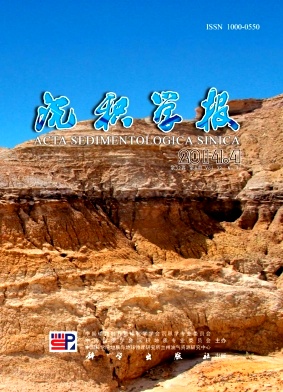Origin of 17α (H)-Rearranged Hopanes in Upper Palaeozoic Coal Bearing Source Rocks in Northeast Ordos Basin
- Publish Date: 2014-08-10
-
Key words:
- Ordos Basin /
- coal-bearing source rocks /
- 17&alpha /
- (H)-diahopane /
- composition of organic materials /
- depositional environment
Abstract: Geochemical characteristics of saturated hydrocarbons have been discussed on the basis of GC/MS analysis for the 10 typical coal-bearing source rock samples in northeast Ordos Basin. Three series of rearranged hopanes, 17α (H)-diahopanes, 18α (H)-neohopanes and unidentified earlyeluting rearranged hopanes, were detected. The analytical results showed that the hopane series compounds have two different distribution patterns. One is conventional pattern, which has high abundance of regular hopanes, low abundance of 17α (H)-diahopanes and 18α (H)-neohopanes, represented by source rock samples from Yu 20 and Shuang 1 well. The other one is unconventional model, characterized by abnormally rich in 17α (H)-diahopanes and a C30-early-eluting rearranged hopane, represented by source rock samples from Su 27 well. The source rocks from Su 27 well high relative abundance of 17α (H)-diahopanes and also high absolute concentration. The main controlling factors of extremely abundant 17α (H)-diahopanes are discussed from the composition of organic materials, maceral, the abundance of organic matters and its occurrence, maturity, depositional and diagenetic environment. The result shows that the origin and accumulation of high abundance of 17α (H)-diahopanes in source rocks has a close relationship with higher plants source materials. Weak oxidation to oxidation fan marginal peat bog facies is a favorable sedimentary facies for forming a significant proportion of 17α (H)-diahopanes. However, the influences of maceral, maturity, the abundance of organic matters and its occurrence are not sure.
| Citation: | Origin of 17α (H)-Rearranged Hopanes in Upper Palaeozoic Coal Bearing Source Rocks in Northeast Ordos Basin[J]. Acta Sedimentologica Sinica, 2014, 32(4): 790-796. |






 DownLoad:
DownLoad: